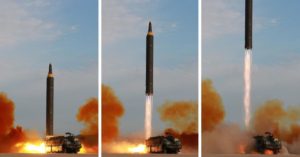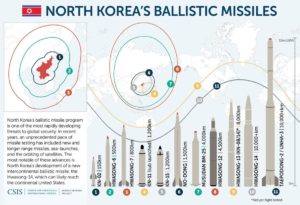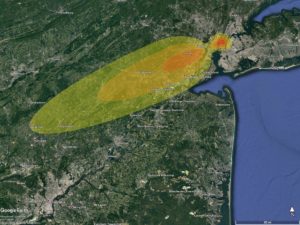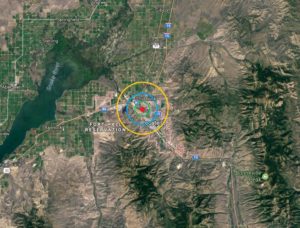This was an interesting article that was shared with me, and so I wanted to pass it on; the link to the original is below. Bear in mind that the examples below are based off a model of a 150-kiloton nuclear weapon. The USSR detonated the most powerful nuclear weapon to date at 50-megatons (50 million tons of tnt). In its “final” form (i.e. with a depleted uranium tamper instead of one made of lead) it would have been 100 megatons. Altitude variances to bomb yield can drastically impact effects of detonation, and the one mile air burst, listed below is just an example. This article also did not go in to EMPs from high altitude blasts; another fascinating topic. I am not advocating war, nor does this imply that war is imminent; just a visualization of capabilities.
Jon
These Maps Show Just How Much Damage A North Korean Nuclear Blast Would Do to U.S. Cities
October 25, 2017

Most of the talk of North Korean aggression has focused on nuclear war. The international community is unwilling to allow such an unstable regime to develop usable nukes. So what would happen if North Korea could put together warheads and the missiles capable of reaching the other side of the planet? Here are some projections.

The images are estimates, of course, and part of a convincing argument constructed by Business Insider using a creative map created by Alex Wellerstein, a historian of science at Stevens Institute of Technology. His map allows you to overlay simulated nuclear damage anywhere in the world.
“A realistic understanding of what nuclear weapons can and can’t do is necessary for any discussion that involves them,” Wellerstein told Business Insider. “People tend to have either wildly exaggerated views of the weapons, or wildly under-appreciate their power.”

As BI writes, the “blasts we use to estimate deaths and injuries are 150-kiloton airbursts detonated about 1 mile above the ground. Nuclear weapons inflict the most damage as airbursts — detonating the bombs hundreds or thousands of feet above a target spreads blast energy more efficiently. That makes a bomb more deadly than if it were detonated on the ground, since soil and structures can absorb or block some of that energy.”
Here are what the colors mean. The yellow, about 0.56 miles wide, is the fireball itself. Total destruction. The green shows the most intense radiation. An area of 1.24 miles would be saturated. Humans in this zone have little chance of survival. The bluish-gray is an air blast about 4.64 miles wide. This is a devastating wave that is highly destructive. The orange shows thermal radiation. This is a wide area, about 6.54 miles. People in this area would have serious burns, at least.
Here are simulations of what might happen in some of America’s most populated cities. The radius is shown, then an image showing how the prevailing winds might change the area of damage.
Tampa, Florida: 67,000 dead, 161,000 injured


New Haven, Connecticut: 85,000 dead, 117,000 injured


Detroit, Michigan: 102,000 dead, 220,000 injured


Miami, Florida: 125,000 dead, 277,000 injured


Honolulu, Hawaii: 151,000 dead, 165,000 injured


Philadelphia, Pennsylvania: 301,000 dead, 465,000 injured


San Francisco, California: 305,000 dead, 361,000 injured


Boston, Massachusetts: 311,000 dead, 491,000 injured


Chicago, Illinois: 351,000 dead, 492,000 injured


New York, New York: 959,000 dead, 1.5 million injured


Pocatello, Idaho (not in the original article)
For kicks and giggles, here is a rough estimation of what 150-kilotons would do if dropped on my home according to the article. Honestly I figured it would do more, but 150-kilotons is a relatively small bomb in regards to the modern global arsenal.

http://tribunist.com/military/these-maps-show-just-how-much-damage-a-north-korean-nuclear-blast-would-do-to-u-s-cities/?utm_source=MOH


Leave a Reply